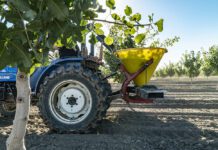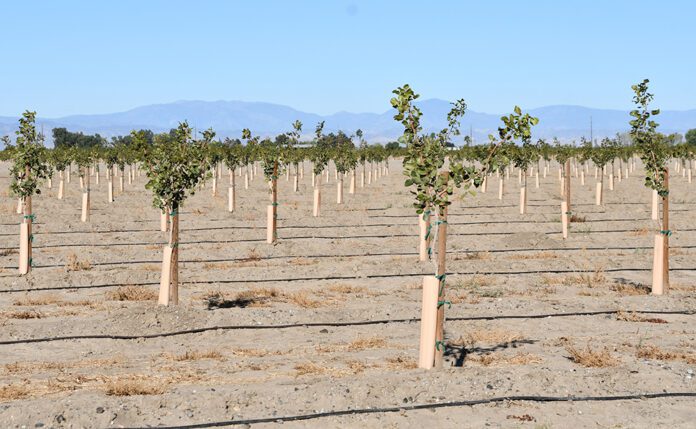
Sacramento Valley pistachio acreage continues to grow, spurred by better prices compared to competing crops, a more positive water outlook and boron tolerance. But the movement isn’t without challenges as north-state producers grapple with the cost and logistics of trucking their crop to San Joaquin Valley hullers.
Terra Bella-based Setton Farms has been one of those attracted to Northern California, having purchased more than 1,300 acres in Yolo County over the past four years. Only part of the acreage is currently planted to pistachios.
“We’ve been hesitant because of Botryosphaeria issues in the past, but we think we have a pretty good way to deal with the disease,” said Jeff Gibbons, Setton Farms grower relations manager. “With the drought conditions we’ve been experiencing, it makes more sense to be north of the Delta because there are so many restrictions about moving water south in the California Aqueduct.”
UCCE Farm Advisor Katherine Jarvis-Shean, who serves Sacramento, Solano and Yolo counties, agreed, saying water availability is one of the big drivers in increased Sacramento Valley pistachio plantings.
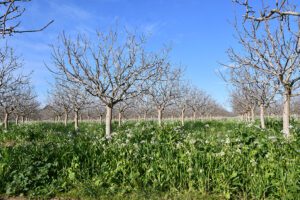
SGMA Factors into Northward Migration
Various groups have predicted at least 500,000 to 1 million acres of farmland will have to be fallowed by 2040 to meet the Sustainable Groundwater Management Act goals. Passed by the California Legislature in 2014, SGMA requires groundwater basins to develop and implement sustainability plans that balance groundwater withdrawal with recharge.
Much of that idled farmland, including pistachio and almond ground, will come from the south San Joaquin Valley. In that region, groundwater overdraft has been exacerbated by federally legislated reductions in Central Valley Project surface irrigation supplies.
“We see bigger-scale folks eyeing the water we have up here,” Jarvis-Shean said. “If you have ample clean water, the south San Joaquin is still a better place to grow pistachios in terms of yield. But if you don’t have clean water, clean soil or don’t have enough water and you already have ground up here, pistachios can look pretty attractive.”
That’s not to say Sacramento Valley groundwater basins don’t have to develop and implement their own sustainable groundwater plans. They do, but groundwater overdraft hasn’t been nearly the problem in the north part of the state because of more reliable surface supplies.
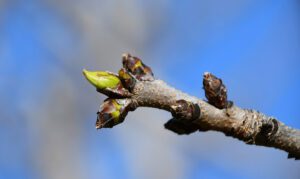
In pistachios, water plays a unique role beyond just tree health, Gibbons said. Particularly in the winter, ample water sets the stage for improved hull integrity during the growing season, which in turn reduces navel orangeworm damage. As a result, he said they’ve noticed generally less NOW damage to pistachios grown in the north compared to those from the San Joaquin Valley.
Boron a Factor in Yolo County
In Yolo County specifically, boron found in soil and irrigation water also has contributed to increased pistachio acreage, Jarvis-Shean said.
The naturally occurring element can be problematic to walnuts and almonds, which are relatively susceptible and become less productive under high concentrations. Because pistachios are less sensitive and can still be productive under higher boron levels, she said many growers have shifted acreage.
“That’s why pistachios have been exploding so much in Yolo County,” Jarvis-Shean said.
When she was conducting her doctoral research on pistachios and almonds from 2009 to 2012, Jarvis-Shean said she struggled to find a pistachio orchard in the Sacramento Valley in which to conduct her studies. That’s not the case anymore.
Nick Edsall, orchard manager for Woodland-based Bullseye Farms, said they began planting pistachios about 10 years ago because of boron issues and to continue diversification.
“We were looking at just planting a lot more permanent crops thinking that once you get them established, it’s not so hard to manage them and also the margins are better,” he said. “But with all the downward trends in permanent crops the last few years, we’re very happy we’re still in the row crop business.”
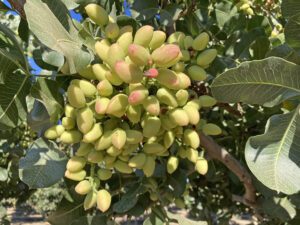
Yolo County has historically been row crop country. As growers including Bullseye began planting almonds and walnuts, they noticed problems with boron.
“We can get away with almonds on a percentage of our ground,” Edsall said of the boron problem. “Walnuts we can only plant on a small percentage because the leaves just burn up. By August, the leaves turn brown and shrivel.”
To remain diversified, Edsall said they looked to pistachios.
“They actually do a little bit better when the boron levels are a little higher,” he said. “With the levels we have in our soils in Yolo County, you might consider that optimal for pistachios.”
Over the years, they planted 1,000 acres, with the first harvest in 2020. Although the crop remains profitable, Edsall said he’s worried looking down the road.
“Even now, the economics are good for pistachios, but we’re kind of scared that won’t be the case in the near future,” he said. “10 years ago, it looked really good.”
The go-go days of planting in Northern California may have slowed, said Yolo County Deputy Ag Commissioner Molly Mathews.
“We’ve generally noticed a slowdown in converting from annual crops to permanent crops,” she said. “I think the pistachio price is still stronger compared to walnuts or almonds, but I think we’re going to hit a pause in planting any orchard commodity.”
Labor Costs Play a Role
Although not specific to the Sacramento Valley, labor costs also have prompted a shift into more mechanized crops, including pistachios, Jarvis-Shean said.
“When you look at mechanized crops, walnut prices are not good,” she said. “Almond prices are not good. Processing tomato contract prices and acreage are down. Even though we’re at the very beginning, we’re starting to see pistachio prices go in the same direction. But it’s still the most appealing mechanized crop for most of the valley.”
Drawing from USDA data, UCCE Assistant Professor of Ag Economics Jay Sayre said the state’s pistachio growers saw average returns of $2 per pound. in 2022. That compared to $4.50 per pound. in 2013 and 2014. He cited world production increasing by nearly 40% in 2023-24, due to an “on” year, for some of the drop in returns. The United States grows most of the world’s pistachios, followed by Iran and Turkey.
“Recently, demand hasn’t kept up with global supply,” he said during a virtual presentation at the recent UC Sacramento Valley Pistachio Meeting in Woodland. That, in turn, could lead to a nearly doubling of ending stocks, which could put additional pressure on grower prices.
Hulling Logistics Remain a Challenge
One of the challenges with northern pistachio production is the lack of hulling facilities. More than other tree nuts, pistachios need to be hulled within 24 to 48 hours of harvest to prevent shell staining. With most of the crop going in-shell, maintaining a nice blonde shell is critical.
Bullseye Farms spent about $1,000 per load to truck their crop to a facility near Firebaugh in 2023, and the cost would likely be more if they had to ship to facilities farther south.
But Edsall said logistics may be more of an issue. They have to schedule harvest so they have a full load by the end of the day, since they don’t want partial loads sitting overnight.
“You just have to stay on top of the harvesting crews,” he said.
North-State Growth by the Numbers
While the 13,065 bearing acres in 11 Sacramento Valley counties pales in comparison to the state’s 461,080 overall bearing acres reported by the Pistachio Administrative Committee, the rapid expansion has nonetheless caught people’s attention.
In Yolo County, for example, farm gate value for pistachios has grown from just $2.5 million in 2019 to about $27.5 million in 2022, according to the county agricultural commissioner’s crop report. In both 2021 and 2022, pistachios were among the top 10 most valuable crops in the county based on farm gate value.
The huge jump in pistachio crop value is due to young acreage beginning to bear and trees that are a little bit older reaching peak production, Yolo County’s Mathews said.
In the 11 Northern California counties combined, growers harvested about 41.6 million pounds of pistachios for open shell, closed shell and shelling stock in 2023, according to the administrative committee. To maintain grower privacy, the committee combines data from Butte, Colusa, Glenn, Placer, Sacramento, Shasta, Solano, Sutter, Tehama, Yolo and Yuba counties. Statewide, growers harvested more than 1.48 billion pounds.



